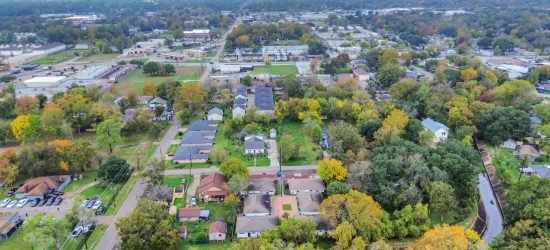Multigenerational homes, also known as intergenerational or extended family homes, are residences where multiple generations of a family live together under one roof. This living arrangement has become increasingly popular in recent years for various reasons, ranging from economic considerations to cultural traditions. In this comprehensive guide, we’ll delve into the benefits and considerations of multigenerational homes, helping you understand if this living arrangement is right for your family.
Understanding Multigenerational Homes

Multigenerational homes have a long history and are common in many cultures worldwide. Traditionally, multiple generations living together was the norm, with grandparents, parents, and children sharing a household. However, as societal norms shifted toward nuclear families in the 20th century, the prevalence of multigenerational homes declined in many Western countries.
In recent years, there has been a resurgence of interest in multigenerational living, driven by several factors:
-
Economic Considerations
Rising housing costs, coupled with stagnant wages and economic uncertainty, have created significant financial hurdles for many families. The traditional model of separate housing for each generation has become increasingly unsustainable, prompting families to explore alternative living arrangements. Multigenerational living offers a viable solution by allowing families to pool their resources and share the financial burden of housing expenses. By sharing rent or mortgage payments, utilities, groceries, and other household costs, families can achieve significant savings and improve their overall financial stability.
-
Cultural and Ethnic Traditions
Multigenerational living is deeply ingrained in the cultural and ethnic traditions of many societies around the world. In these cultures, family cohesion and support are highly valued, and multigenerational households are the norm rather than the exception. These cultural values emphasize the importance of intergenerational relationships, mutual care, and shared responsibilities within the family unit. For many individuals from these cultural backgrounds, multigenerational living is not only a practical choice but also a way to preserve and honor their heritage and identity.
-
Changing Demographics

Demographic shifts, including longer life expectancies, delayed marriage, and childbearing, have contributed to the rise of multigenerational households. As people live longer and healthier lives, older adults may choose to live with their adult children for companionship, care, and support. Likewise, adult children may return home to save money, pursue educational or career opportunities, or provide assistance to aging parents. These changing demographics reflect a broader societal shift towards more fluid and dynamic family structures, where multigenerational living is increasingly common and accepted.
-
Desire for Community and Support
In an increasingly isolated and fast-paced world, many individuals long for deeper connections and a greater sense of belonging. Multigenerational living offers a built-in support system, where family members can rely on each other for emotional support, companionship, and shared experiences. By sharing a home with multiple generations, individuals can cultivate meaningful relationships, strengthen family bonds, and create lasting memories together. Additionally, multigenerational living fosters a sense of community and belonging that is often lacking in more individualistic living arrangements, providing a valuable source of social connection and support.
Benefits of Multigenerational Homes

Multigenerational homes offer a multitude of advantages beyond financial savings, including shared responsibilities, emotional support, intergenerational bonding, and cultural preservation.
Let’s delve deeper into each of these benefits to understand the holistic advantages of this living arrangement.
-
Financial Savings
One of the most tangible benefits of multigenerational living is the potential for significant financial savings. By sharing housing costs, such as rent or mortgage payments, utilities, groceries, and other household bills, families can reduce their overall expenses and achieve greater financial stability. This pooling of resources allows family members to stretch their budgets further and allocate savings towards other priorities, such as education, healthcare, or retirement planning.
-
Shared Responsibilities

Multigenerational homes often involve the sharing of household chores, caregiving duties, and other responsibilities among family members. This distribution of tasks not only lightens the workload for individual family members but also fosters a sense of teamwork, cooperation, and mutual support. From cooking meals and cleaning shared spaces to caring for children, elderly parents, or family members with special needs, the collaborative nature of multigenerational living promotes a culture of shared responsibility and interdependence within the household.
-
Emotional Support
Living with family members provides built-in emotional support systems, as individuals can turn to each other for companionship, advice, and encouragement. This sense of closeness and connection can be particularly valuable during times of hardship, illness, or life transitions. Whether celebrating milestones, navigating challenges, or simply sharing everyday moments, the presence of loved ones in the home creates a supportive environment where individuals feel valued, understood, and cared for.
-
Intergenerational Bonding
Multigenerational living offers unique opportunities for intergenerational bonding and relationship-building. Grandparents, parents, and children can spend quality time together, share experiences, and learn from each other’s perspectives. Through meaningful interactions, storytelling, and shared activities, family members of different ages can forge deep bonds and create lasting memories that strengthen their familial ties and enrich their lives.
-
Cultural Preservation
For families with strong cultural or ethnic traditions, multigenerational living plays a crucial role in preserving and transmitting these values to younger generations. Elders serve as guardians of cultural knowledge, languages, and customs, passing down their heritage to their children and grandchildren. By living together under one roof, family members can participate in cultural celebrations, rituals, and practices, ensuring that their heritage is not only preserved but also celebrated and embraced by future generations.
Considerations for Multigenerational Living

While the advantages of multigenerational living are abundant, navigating the associated considerations and challenges is crucial for maintaining harmony and well-being within the household.
Let’s explore some key areas that require careful attention and proactive management:
-
Space and Privacy
Sharing living quarters with multiple generations can sometimes lead to conflicts over space and privacy. It’s essential to ensure that there is adequate space for each family member to have their privacy and personal space. Establishing clear boundaries and guidelines regarding personal areas, shared spaces, and common areas can help mitigate potential conflicts and promote a sense of respect and consideration among family members.
-
Communication and Conflict Resolution
Effective communication and conflict resolution skills are essential for fostering positive relationships and resolving disputes in a multigenerational household. Open and honest communication, active listening, and empathy are critical for addressing differences, expressing concerns, and finding mutually satisfactory solutions. Family meetings or regular check-ins can provide opportunities for discussing issues, sharing perspectives, and reinforcing familial bonds.
-
Cultural Differences
Multigenerational homes often bring together individuals with diverse backgrounds, beliefs, and lifestyles. Embracing and respecting each other’s cultural differences is essential for promoting understanding, acceptance, and harmony within the household. Creating an inclusive and welcoming environment where everyone feels valued and respected contributes to a sense of unity and cohesion among family members.
-
Caregiving Responsibilities
In multigenerational households, caregiving responsibilities may fall on adult children who are caring for aging parents or grandparents. It’s essential to recognize and address the emotional, physical, and financial challenges associated with caregiving. Open discussions about caregiving needs, preferences, and expectations can help distribute responsibilities fairly and ensure that everyone feels supported and appreciated.
-
Financial Arrangements
Families living together should have clear agreements and arrangements regarding financial contributions, household expenses, and shared resources. Transparency, fairness, and accountability are essential for maintaining financial harmony and preventing misunderstandings or conflicts. Establishing a budget, defining financial responsibilities, and regularly reviewing financial arrangements can help ensure that everyone contributes equitably and shares the financial burden fairly.
Conclusion
Multigenerational homes offer a range of benefits, including financial savings, shared responsibilities, emotional support, intergenerational bonding, and cultural preservation. However, they also require careful planning, communication, and flexibility to navigate the challenges associated with living with multiple generations under one roof.
By considering the unique needs and dynamics of your family, you can determine whether multigenerational living is the right choice for you. Whether you’re seeking financial stability, family cohesion, or a sense of community, multigenerational homes offer a compelling option for modern families looking to thrive together.











